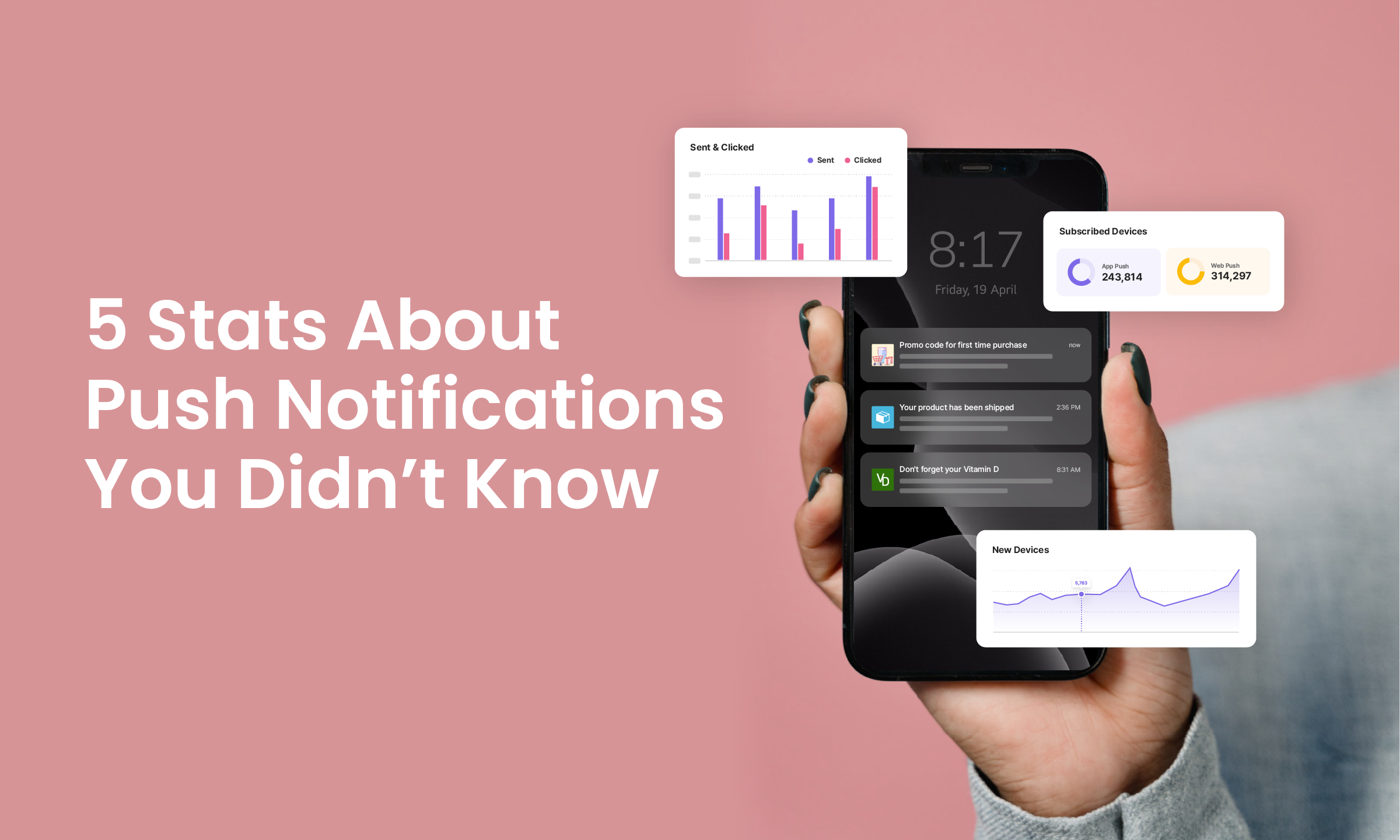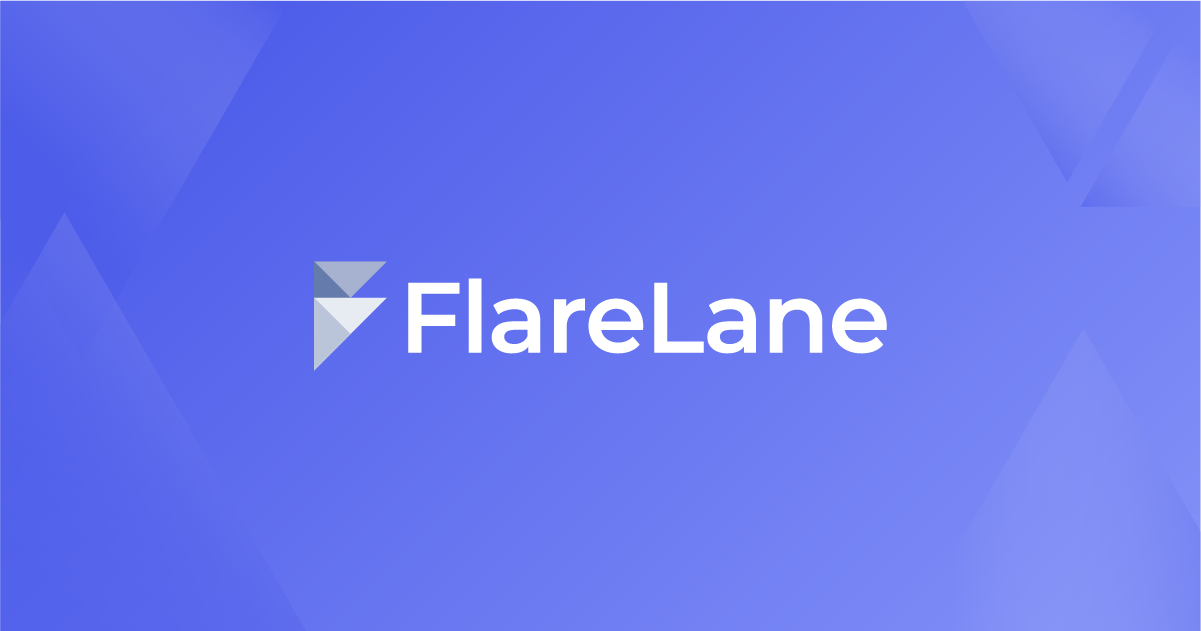5 Stats About Push Notifications You Didn’t Know

Since smartphones revolutionized the world in the early 21st century, push notifications have remained a crucial tool for marketers focused on customer retention and business growth.
Push notifications' cost-efficiency, combined with their ability to reach users directly on their mobile devices, made them an indispensable part of marketing automation strategies. Over the years, marketers have embraced push notifications, leveraging their instant delivery and direct reach to keep customers engaged.
But with the ever-evolving digital landscape, do push notifications still hold the same status as they did over a decade ago? Are they as effective in today’s marketing strategies as they once were?
In today's blog, we've compiled five key facts backed by the latest statistics that demonstrate the state of push notifications today. Keep reading to learn how this tool will continue to evolve and remain relevant in 2024!
✅Using an urgent tone and 'power words' in push notifications can increase customer retention by 30%.
✅More than half of Gen-Zs prefer to receive relevant updates, deals, and promotions through push notifications rather than emails.
✅Using emojis in push notifications can boost click-through rates by as much as 124%.
1. Urgency is a Virtue
Black Friday sales, flash sales, and limited-time offers are perfect examples of how the Fear of Missing Out (FOMO) can drive consumer behavior. The sense of urgency created by these events motivates users to take quick action before the opportunity disappears.
Push notifications are the perfect tool to tap into this sense of urgency, prompting users to make a purchase or take advantage of a deal before it’s too late. An A/B test conducted by Publishers Clearing House (PCH) in 2017 revealed that using an urgent tone and power words like “now,” “limited time,” and “act fast” in push notifications can increase customer retention by 30%.
However, it’s essential to avoid crossing the line into clickbait territory. A survey found that 55% of users classify push notifications as spam when they feel the message is misleading. Marketers should strive to create urgency without losing trust, crafting notifications that are enticing but honest.
2. Gen-Zs Don’t Mind a Notification or Two
Push notifications can be highly effective, particularly with Gen-Z users. This generation, born between 1997 and 2012, has grown up in a digital-first world and is more comfortable with technology than any previous generation. They favor instant, bite-sized content and are increasingly reliant on mobile devices for shopping, entertainment, and socializing.
According to a 2022 report by McKinsey, nearly 70% of Gen-Z prefers to receive relevant updates, deals, and promotions through push notifications rather than emails. Push notifications are the ideal medium for this generation because they deliver concise, timely, and tailored content in line with their consumption preferences.
Gen-Z also places high value on personalization, expecting notifications to be relevant to their specific interests and shopping habits. A study by Deloitte in 2022 found that personalized experiences increase the likelihood of Gen-Z making a purchase by 26%.
3. Relevancy Over Frequency
One of the most common mistakes marketers make with push notifications is sending too many, which can quickly overwhelm and frustrate users. While push notifications can be an effective way to re-engage users, such as sending reminders about items left in their shopping carts, it's crucial not to overdo it. If users feel bombarded with notifications, they will either ignore them or, worse, change their notification settings or opt out entirely.
A 2023 report by Business of Apps revealed that the average smartphone user in the U.S. receives 46 push notifications per day. The same study found that 42% of users adjust their notification settings when they feel overwhelmed by the frequency of alerts.
This statistic highlights the importance of relevance over quantity—users will tolerate (and even appreciate) push notifications as long as they find them useful and timely. The key for marketers is to strike the right balance, ensuring that notifications provide value without becoming intrusive.
4. Emojis Are Game Changers
Emojis have become a ubiquitous part of digital communication, and they’re now being embraced in marketing strategies to increase engagement. Emojis can make push notifications more visually appealing, convey emotions, and break through the clutter of plain text messages. When used thoughtfully, they can create a sense of friendliness and fun, especially for younger audiences.
Statistics from a 2023 study showed that using emojis in push notifications can boost click-through rates (CTR) by as much as 124%. Additionally, mobile and email marketing messages that featured emojis saw a 775% increase in engagement compared to messages without emojis. The beauty industry, which relies heavily on aesthetics and trends, can particularly benefit from incorporating emojis into its push notifications. For example, using makeup, skincare, or fashion-related emojis can help emphasize the message and attract attention.
5. Chrome Is the Norm for Web Push Notifications
While most marketers focus on mobile push notifications, web push notifications are an equally powerful tool. Web push notifications allow brands to reach users directly through their browsers, making them particularly valuable for e-commerce brands. Web push notifications can be used to share updates, promote sales, or re-engage users who have abandoned their shopping carts. What’s more, they’re easy to implement and can reach users even when they aren’t actively browsing the website.
In 2022, Google Chrome accounted for over 95% of all web push notifications. This statistic makes it clear that marketers who use web push notifications don’t need to worry about optimizing their messages for multiple browsers. By focusing on Chrome, marketers can streamline their efforts and focus on crafting engaging, actionable messages for the vast majority of users.
Final Thoughts
Push notifications continue to be a practical and effective marketing tool for brands across various industries, including beauty. With their ability to deliver personalized, timely, and engaging content, push notifications remain a key component of customer engagement strategies. As mobile and web push notification technologies evolve, especially with the help of AI, notifications are becoming more intelligent and targeted, delivering better results than ever before.
However, marketers must be strategic in how they use push notifications to avoid overwhelming users. By focusing on urgency, personalization, relevance, and engagement strategies like emojis, brands can maximize the impact of their notifications without driving users away. Web push notifications, particularly through Chrome, also offer an opportunity for brands to reach users beyond the mobile screen.
FlareLane is a next-generation CRM marketing automation platform that features a comprehensive solution for enhancing customer interaction and engagement. With in-app messages, push notifications, advanced analytics, real-time communication tools, and personalized marketing strategies, we can help you create meaningful and lasting customer relationships.
Ready to take your customer engagement to the next level? Learn more about how we can help your brand thrive.


